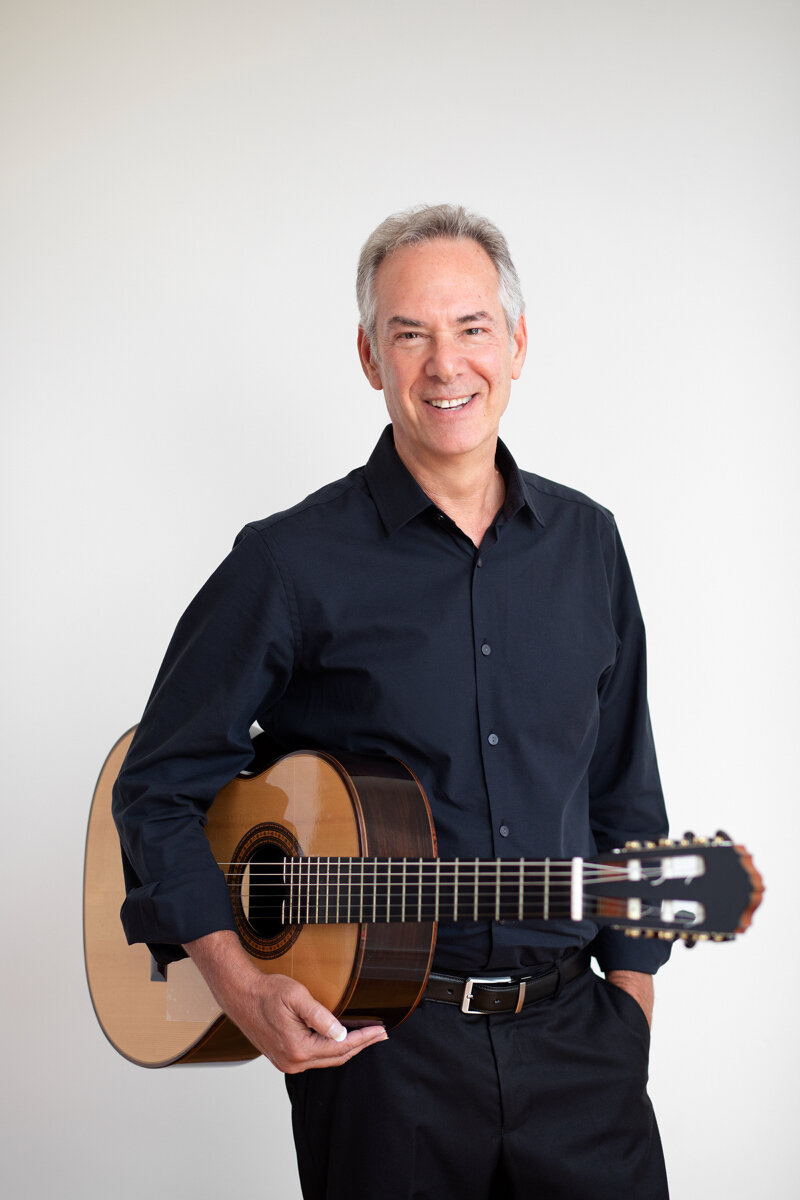Stage Deportment III: Music Stands and Scores
I sometimes wince while watching performers on stage as they manage, or mis-manage their equipment. Even the most polished players make easily avoidable gaffes in this arena. It's not that there is only one way to do things, but there are certainly better and worse ways. If we think about the audience's experience in it's entirety, we need to consider the impact our handling of these objects can have. In my series on stage deportment, I wrote about bowing and then about the clothes we wear. It's necessary to add a few remarks about what we do with our scores and our music stands.
It's true that most guitarists play by memory. This long-established tradition, though, is showing cracks. More and more, I see soloists on stage with scores in front of them. (And why not?--these instrument-specific traditions are seemingly random. Pianists play by memory but organists read. Most wind and string soloists play with scores but concerto soloists usually play by memory. Guitarist play by memory but lutanist read...) Further, in the context of chamber music, the prevailing tradition is to use scores. (This tradition, too, is showing cracks as several guitar-based ensembles now play by memory). Whichever the situation, if you find yourself on stage with a music stand and scores, it's worth talking about what impact their presence has on the performance, and how to use them without their becoming a distraction.
Guitarists generally use stands which can be set low. We do so both to keep them from blocking the instrument's soundhole and so reducing the received volume, and to avoid blocking the audience's view of the player's hands. There is a third reason as well: to render it less noticeable. So, rule number one: set the stand at a height low enough to accomplish these goals. (An exception would be your inability to read scores that far away from your eyes!)
I prefer to be largely unaware the performer is reading. So to me, it is essential to render the scores invisible to the audience. I don't mean literally invisible, of course, as if reading were something to hide: I just prefer to have my attention effortlessly and without distraction trained on the player. If I see the music, other thoughts begin to come to mind. For instance, it is common for players to use photocopies. When I see a stack of white copy-paper on a stand I think, maybe the player never bought the scores. Maybe I know the composer, and even if I don't, this thought is a negative intrusion into my enjoyment of the music. (For the record, I normally use photocopies too, but I always buy the scores. More on that topic in a moment). Even if the player uses the actual score, seeing it still distracts me. There might be various editions of the piece. Now I'm thinking, why did she pick that edition? Or another caveat: scores often have particular artwork or ads on their back covers. Seeing it is a distraction.
The simple solution to all of this is the black-board. A Manhasset stand with "Standouts" works well in this regard, but it won't retract low enough to satisfy the height requirement. As folding stands are transparent, we need to put something on the stand to block the audience's view of our scores. There are lots of ways to do this but the most effective and professional-looking is to use a black foam-core board. General purpose stores (like Walmart and many drugstores) and crafting supply stores (such as Michael's and Hobby Lobby) normally carry these oversized styrofoam boards. Kids use them for table displays for "science night" or whatever. Recently, they started selling them not only in black, but in black with a black interior. This is great because now, when you cut them to size, we don't see a white strip outlining the board. It is pure black.
I measure out the size I want and mark it clearly with pencil, then use a matte knife to cut it. I cut it straight. A curved, clumsy edge is highly visible and as noticeable as a picture hanging crookedly on the wall. Mine is 11.5" tall and 27" wide. I score it in the center so it folds easily in half and fits in my bag. I love this material because it is stiff enough to hold up music that is way too wide for your stand and yet it is very light. (Mine has been on many planes and is no worse for the wear. Further, it's cheap and easy to replace).
Many artists use a black three-ring binder. I appreciate the effort but the result can be disappointing. Typically a three-ring binder is heavy, plus it ends up heavier on one side than on the other. Few folding music stands can bear the weight and remain straight. We end up watching the artist tilting her head as she reads off the sagging, tipping stand. Distracting! I've also had students one-up me in this game and mount every single page of score on black posterboard. "A" for effort, but seriously? As time passes and you use more and more scores, they'll wish they'd gone with a separate board for this purpose... Now that the music is hidden behind a black-board, don't make the mistake I saw an accomplished professional make recently. He had a proper low stand and the music was well-obscured by a black-board. But since he intended to read from a score only during his first piece, he moved it off to his left immediately afterwards. Unfortunately, the swiveling motion he used with his left arm effectively turned it 180º around, leaving the scores fully revealed, brilliant white, reflecting the spotlights and shining hard in our eyes for rest of the concert. Why didn't he simply ignore the stand after the first piece, leaving it, essentially invisible, sitting in place?
Once the issue of hiding the music is solved, there is the question of handling the scores themselves. To me, scores need to remain on the music stand. Players who drop music on the stage floor convey a wholesale disregard for the formal character of classical music concerts. It always leaves me wondering if they think they are still in their bedrooms. It is sloppy, visually distracting, disrespectful and has the added bonus of getting the scores dirty. I've seen professional players not only throw scores on the floor, but I've seen them subsequently both step on them and put their chair leg on them. This confounds me. In my perception of what we do with scores, this is the number one gaffe. It is easily avoided. Just keep your scores on the stand.
Turning pages would seem to be a simple matter but it can also be a fumbling distraction. What I do and what I like to see is a simple, effortless, silent turn of a page, book-style. Normally I dog-ear the lower right corner to make it easy to grab, and if there are several pages to turn, I carefully increase the size of each successive dog-ear so I don't accidentally grab two pages at once.
The most common bad method of page-turning is sliding papers sideways, right to left. This takes more effort, is less efficient in that it only reveals one new page instead of two, and worst, is noisy. Further, if the pages of the score are separate, enabling this sort of sliding, then accidentally dropping them on the floor is more likely. Another even worse method is to lift the score up into the air with one hand then tuck it behind the other scores by moving those forward with the other hand. This move is visually intrusive, clumsy and awkward, as well as being noisy. Frequently, in the middle of this move, performers get the corner of the score they are trying to tuck behind caught between the bars of the folding stand and have to fumble for a while to sort it out.
By arranging the score so that it can be handled like a simple booklet, and turn the pages in the silent way described above, an uninterrupted flow of music-making is made possible.
There are a few reasons we may choose to use photocopies on stage instead of the original score. Many artists prefer to preserve their scores in new condition, only making the necessary markings on copies (not me!). In my case, I find I often need to create performance scores out of the booklets publishers offer, as they seldom feature useful page turns. In many cases, we need to be able to see several pages at once. In this case, I always copy the music, trim the extra 1-2 inches off each side (straight, with a paper-cutter!) and tape them together. (Trimming the sides makes them narrower, meaning I won't have to look as far to see the edges). Leaning against the black-board described above, even five pages taped together lie comfortably and safely on the stand.
Many artists are now using iPads or similar devices on stage. I applaud them and think it's a great development. I've resisted doing so at this stage myself, though. The fears of a technical problem, a battery failure, an app glitch, or accidentally knocking it over have kept me in the sidelines so far. But I love the notion of adjustable font-size, foot-pedal page turning and back-lighting. In the meantime, old-fashioned paper is pretty reliable. (And cheap).
Finally, a few words on leaving the stage when there is a music stand full of scores in front of you. When you finish your final piece, you'll stand up and take a bow. At this point, it's best to leave the stage. Walking off to the sound of the audience clapping is customary and desirable. If you stop to gather your scores, the clapping may dissipate, and you'll find yourself walking off in silence, a strange and uncomfortable sensation. So, let the stage manager collect your scores for you (or come back afterwards to gather them). Don't ruin the moment of the final applause by fumbling with a pile of paper or folios.
I'm in favor of reading music on stage. I see no reason not to and lots of reasons to do so. Having a stand and scores with us on stage offer additional opportunities to present ourselves as professionals or, if we're not careful, as something less. How we handle these objects contributes to the impression we make while on stage.
Here are the first and second installments in this series.
Turning pages would seem to be a simple matter but it can also be a fumbling distraction. What I do and what I like to see is a simple, effortless, silent turn of a page, book-style. Normally I dog-ear the lower right corner to make it easy to grab, and if there are several pages to turn, I carefully increase the size of each successive dog-ear so I don't accidentally grab two pages at once.
The most common bad method of page-turning is sliding papers sideways, right to left. This takes more effort, is less efficient in that it only reveals one new page instead of two, and worst, is noisy. Further, if the pages of the score are separate, enabling this sort of sliding, then accidentally dropping them on the floor is more likely. Another even worse method is to lift the score up into the air with one hand then tuck it behind the other scores by moving those forward with the other hand. This move is visually intrusive, clumsy and awkward, as well as being noisy. Frequently, in the middle of this move, performers get the corner of the score they are trying to tuck behind caught between the bars of the folding stand and have to fumble for a while to sort it out.
By arranging the score so that it can be handled like a simple booklet, and turn the pages in the silent way described above, an uninterrupted flow of music-making is made possible.
There are a few reasons we may choose to use photocopies on stage instead of the original score. Many artists prefer to preserve their scores in new condition, only making the necessary markings on copies (not me!). In my case, I find I often need to create performance scores out of the booklets publishers offer, as they seldom feature useful page turns. In many cases, we need to be able to see several pages at once. In this case, I always copy the music, trim the extra 1-2 inches off each side (straight, with a paper-cutter!) and tape them together. (Trimming the sides makes them narrower, meaning I won't have to look as far to see the edges). Leaning against the black-board described above, even five pages taped together lie comfortably and safely on the stand.
Many artists are now using iPads or similar devices on stage. I applaud them and think it's a great development. I've resisted doing so at this stage myself, though. The fears of a technical problem, a battery failure, an app glitch, or accidentally knocking it over have kept me in the sidelines so far. But I love the notion of adjustable font-size, foot-pedal page turning and back-lighting. In the meantime, old-fashioned paper is pretty reliable. (And cheap).
Finally, a few words on leaving the stage when there is a music stand full of scores in front of you. When you finish your final piece, you'll stand up and take a bow. At this point, it's best to leave the stage. Walking off to the sound of the audience clapping is customary and desirable. If you stop to gather your scores, the clapping may dissipate, and you'll find yourself walking off in silence, a strange and uncomfortable sensation. So, let the stage manager collect your scores for you (or come back afterwards to gather them). Don't ruin the moment of the final applause by fumbling with a pile of paper or folios.
I'm in favor of reading music on stage. I see no reason not to and lots of reasons to do so. Having a stand and scores with us on stage offer additional opportunities to present ourselves as professionals or, if we're not careful, as something less. How we handle these objects contributes to the impression we make while on stage.
Here are the first and second installments in this series.





